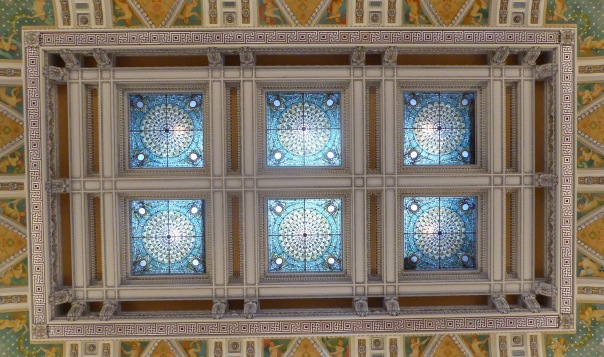
The Library of Congress, the Thomas Jefferson Building, was a joy to visit, primarily for its architecture and design – which is not what I had anticipated. Before I had left home, when Kate suggested that we go there, I had naturally thought first of books, and exhibits about books.
We heard a story about how it ended up so beautiful: The first two construction attempts failed at the level of the foundation, and a third person was called in to complete the project. His son, who had recently graduated from the University of Beaux-Arts in Paris, took over the design and completion of the interior ornamentation. Or so our tour guide told us 🙂
When I was trying to review these facts online for this post, I discovered another version of the story in a book about “German Achievements in America.” That story does not mention any failure on the part of the original (German) architects, but rather emphasizes that they spent twenty years perfecting the design and were never given adequate credit for it.
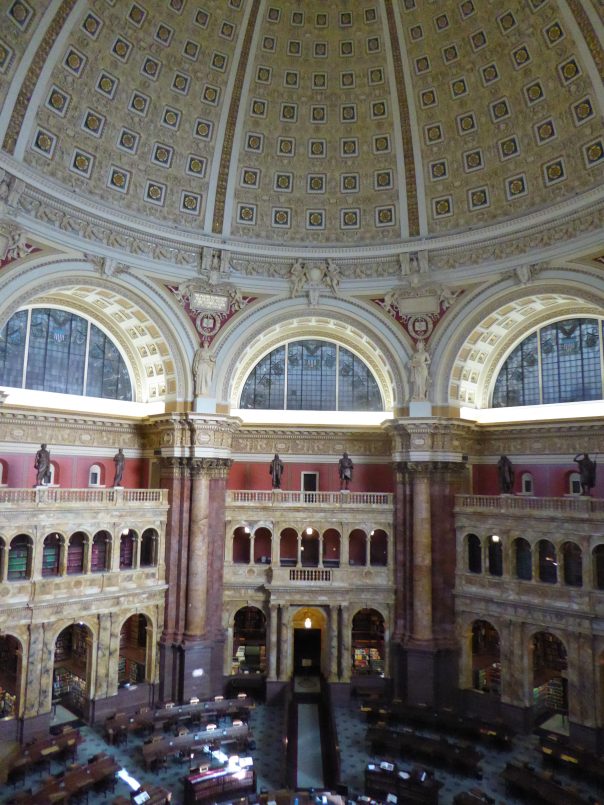
This page on the LOC site gives broader detail about the drama of these events — involving “the selection of the proper cement for the foundation” — and eventual completion in 1897 of the main building of the library, which was not named for Jefferson until 1980.
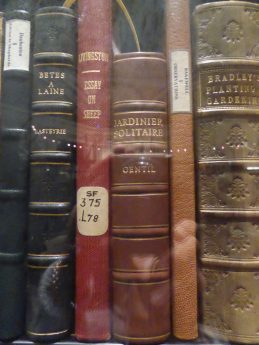
Thomas Jefferson deserved to be honored this way, because he offered to sell his whole personal library to Congress after their collection of books was destroyed by fire in the War of 1812; at that time the library was stored in the Capitol. He said he would accept whatever price they decided upon. Previously they had owned only law books, but Jefferson persuaded them that “…there is, in fact, no subject to which a Member of Congress may not have occasion to refer,” and they bought his 6,487 books for $23,950. That amount was based on the number and sizes of the books.
Jefferson’s generosity was not because he no longer needed what he named “unquestionably the choicest collection of books in the U.S.” He used the money gained to pay some of his debts, and began right away in a “frenzy” to assemble a replacement library for himself, saying, “I cannot live without books….”
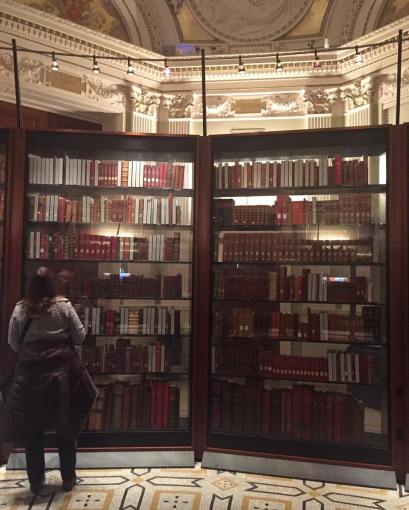
Two-thirds of the new Jefferson library was destroyed by another fire in the Capitol, in 1851. In the last decades efforts have been made to restore all the books that were in the original collection bought from Jefferson, and by 2008 replacements had been found for all but 300 of the original books; together with the volumes not destroyed by fire, these all comprise the exhibit of Thomas Jefferson’s Library which has been on display since then. Though we wandered through a couple of other exhibits in the building, this one is where Kate and I spent the most time. I had been to Jefferson’s home at Monticello ten years ago, but through this unhurried perusal of his books I felt more connection to him than ever before.
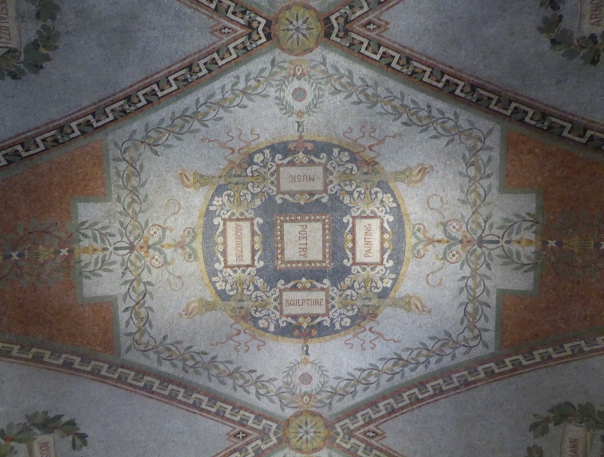
Librarian of Congress Ainsworth Rand Spofford, an appointee of Abraham Lincoln, had wanted the Library of Congress to be not just a resource for legislators but a library for the whole nation, and he was responsible for the copyright law of 1870, which required every author of any copyrighted map, book, piece of music, etc., to deposit two copies in the Library. This method of acquiring materials worked very well, and soon Spofford was pressuring Congress to approve a separate building dedicated to housing the collection, and to do it quickly, because books “were being piled on the floor” and he could see that his job would soon devolve into “presiding over the greatest chaos in America.” Though it took 25 more years before the new building was ready to store the books in a more orderly fashion, Librarian Spofford stayed on all that time, presumably presiding over chaos with hope.
In order to fully appreciate all of the art and architecture of the Library, someone who knows as little as I of fine arts and literature would need days of viewing and background studies. Many short quotes decorate the walls, without reference to the work quoted, and I was curious about these. I did look up this one that I liked (below), and found that it is from a Shakespeare play. Though it is a statement about what we can learn not from books but from nature, I will close with it, as I myself must leave the Library and go now to explore some other good things.

Tongues in trees, books in the running brooks, sermons in stones,
and good in everything.
-William Shakespeare, “As You Like It”
WOW! I’ve recently moved – and even tho I did discard quite a few – I still personally carried the weighty boxes of books happily and protectively. As a matter of fact, I’ve pulled out a book you gave me on my 50th bday. “A.M.M.A” The Life and Words of Amy Carmichael by E.R. Skoglund.
LikeLiked by 1 person
How lovely!! I can imagine how much he would want books!!! I wish that beautiful places like this were still done today!
LikeLiked by 1 person
What an incredible place! Loved the little history lesson. I didn’t know much of that.
LikeLiked by 1 person
It is one of my great life regrets that on our many visits to DC when we lived on the east coast, we never went to the Library Congress. I can’t think why, except maybe that I was afraid to take tired toddlers in and I always thought “Next time” would be better… I can’t imagine that “next time” won’t still happen, but I am happy to visit vicariously through your photos!
LikeLiked by 1 person
I have wonderful memories of visiting the LOC many years ago and thinking that I could point the camera in any direction and get a gorgeous image. What a magnificent space with beauty in every nook. We must’ve been on a tour, but I don’t remember any of what you’re relaying here.
LikeLiked by 1 person
These are wonderful photos.
LikeLiked by 1 person